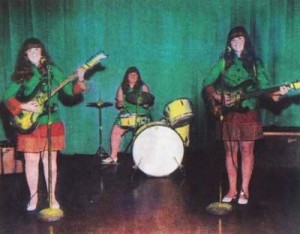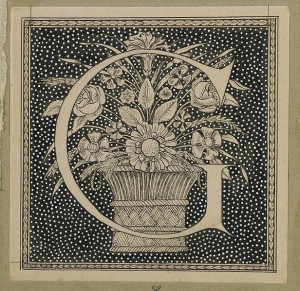Never happened. (Thanks Live Leak.)
You are currently browsing the yearly archive for 2011.
Hire a Player (TriBeCa)
Honestly, I made so many playing mistakes.
If you want to hear that I am done making them,
Yes, at least the big ones
Did I learn from them? Yes, a great deal.
Do I am ready to work for you and generated profit?
Yes, without question.
Who I want to hire me?
Answer: The ones who have a dream and they can risk something.
I have a dream to. I want to help some of the ones that need help.
Helping you, will help me, will help them.
Now, let us talk business.
Just keep in mind that this job is tricky.
The more % you expect to get on a daily basis, the more dangerous it can get!
The more % you expect to get on a daily basis, the more dangerous it can get!!
The more % you expect to get on a daily basis, the more dangerous it can get!!!
That is why; I will not let the pressure of producing our goal, to stay in the way of my game.
My game will produce a win without a need of a number and at the end it will earn profit.
How much?
As much as it will be, and at end of day, week or month,
It will be significant.
Even though I have a pretty good idea of how much we can earn together, I cannot promise the total.
But it will be more than enough to make the risk worth taken it.
Yes, I know, still sound like a promise, but it is not, it is just my way to influence you to hire me.
This is my Goal.
To make 400% to 600% return on investment minimum a year.
I am a player that can win at any casino a profit of 5% to 50% of your initial investment in a single day.
My strategy to start will be to play a safe low level risk.
But still win as much as I can.
I will make 5% a session…..10 to 40 sessions in a month = 150% to 200% (possible)
It can be more, it can be less.
My rate of winning is about 8 out of 10 times or 7 win out of 10 times.
My salary is 30% of the profit I make in a day, month or year. The initial investment it is up to you.
I am trying to race a total of $25,000 to start. It could be more but I do not need more. It could be five investors with $5,000 each one or just only one with the whole amount.
I can start with less till you get familiar with what I do and how much profit you will make.
You can test my knowledge by watching me at the table for as much as you need till you are satisfied.
I am looking to make money; I want to work for you.
I am a family man. This business will be my job.
We would have to meet first to see if we both can work together.
You will not waste your time.
I need your money to make money.
I am a very interesting person to talk to.
Call me
Thanks, Eddie
Richard Stallman, who has always been an extremely independent voice, on Networkworld:
“‘I don’t have a cell phone. I won’t carry a cell phone,’ says Stallman, founder of the free software movement and creator of the GNU operating system. ‘It’s Stalin’s dream. Cell phones are tools of Big Brother. I’m not going to carry a tracking device that records where I go all the time, and I’m not going to carry a surveillance device that can be turned on to eavesdrop.”
Tags: Richard Stallman
I interviewed Tom Waits once and he was every bit the great guy I had hoped. From Vulture, some of his comments upon being inducted into the Rock and Roll Hall of Fame: “This is just like the piano my mom got me. She couldn’t afford it, but she threw a brick through a window and got that piano. She only got seven years for it. She was a good mom, from jail.”
Tags: Tom Waits
AT&T industrial film made in 1976, slightly revised in 1980. Helped tide Shatner over until the T.J. Hooker paychecks started rolling in. (Thanks Endgadget.)
Tags: William Shatner
Hallucinations: Morbid conditions of the mind in which an object is perceived which is not presented to the senses. They are either persistent, as in some forms of insanity, or occasional. Almost every one has had the experience of hearing one’s name called, for instance, when there was no sound. Their occurrence is often the result of anxiety or overwork.
Hats: Head coverings, distinguished from caps by the brim. The manufacture of fur and beaver hats was an important one in the colonies and early United States. The high silk hat was invented in Florence, 150 years ago. The United States manufactures $27, 811, 187 of hats annually, chiefly felt, wool and straw.
Hospitals: The name is derived from the medieval “hospitia,” or places, where lepers and other sufferers from pestiferous maladies were received. To-day hospitals have been devoted to every kind of disease or injury; and in some countries no part of public benefaction is better organized; in France especially such provisions being made that no patient is ever refused admission, there being no charges or formality of any kind. In the United States hospitals are either private or of a semi-public nature, the latter being endowed by funds supplied by state or municipality, subsequent needs being covered by subscriptions in exchange for so-called free beds. In recent years, the art of building and installing hospitals has made great progress, modern institutions combining absolute sanitation with those pleasant surroundings and comforts which contribute so much to convalescence in the patient.
Hygiene: The science of health, also called sanitary science. Personal hygiene consists in the care of the body, bathing, diet, care of teeth, hair, nails, etc., public hygiene in preventative measures for promotion of health of communities by cleanliness of streets, removal or destruction for breeding places of infection, drainage, pure air and good water supply. Moral hygiene includes those measures taken to secure the moral well-being of communities–includes purity of life, the suppression and regulation of vice and crime, in elevation of the world-standard of people at large, cure and prevention of diseases that arise from an evil life. Individual hygiene or sexual purity is one of the most important subjects and should be more thoroughly taught and inculcated into the minds of the youth, and judicious means taken to promote its practice for the general human welfare.
Hysteria: A morbid condition indicated by flatulency and the feeling of a lump or ball in the throat causing a sense of choking or suffocation. Involuntary laughing and crying precede the hysterical fit, in which the patient tosses about violently, and is liable to self-injury. A fit of hysteria often ends in the sufferer going off into stupor or coma , and sometimes this state is reached without preliminary signs. Hysteria is a curious ailment to deal with, being a nervous affection which feeds upon itself, and simulates many diseases. It is always best to exhibit no sympathy with the patient., who is generally a female, but to throw cold water upon her face, apply ammonia to her nostrils, and administer anti-spasmodics.
•Taken from the 1912 Standard Illustrated Book of Facts.
See also
From “Meet the Shaggs,” Susan Orlean’s 1999 New Yorker profile of a polarizing sibling music group which hailed from New Hampshire and was either woeful or wonderful, depending on who was listening:
“The Shaggs were three sisters, Helen, Betty, and Dorothy (Dot) Wiggin, from Fremont, New Hampshire. They were managed by their father, Austin Wiggin, Jr., and were sometimes accompanied by another sister, Rachel. They performed almost exclusively at the Fremont town hall and at a local nursing home, beginning in 1968 and ending in 1973. Many people in Fremont thought the band stank. Austin Wiggin did not. He believed his girls were going to be big stars, and in 1969 he took most of his savings and paid to record an album of their music. Nine hundred of the original thousand copies of Philosophy of the World vanished right after being pressed, along with the record’s shady producer. Even so, the album has endured for thirty years. Music collectors got hold of the remaining copies of Philosophy of the World and started a small Shaggs cult. In the mid-seventies, WBCN-FM, in Boston, began playing a few cuts from the record. In 1988, the songs were repackaged and re-released on compact disk and became celebrated by outsider-music mavens, who were taken with the Shaggs’ artless style. Now the Shaggs are entering their third life: Philosophy of the World was reissued last spring by RCA Victor and will be released in Germany this winter. The new CD of Philosophy of the World has the same cover as the original 1969 album’s photograph of the Wiggin girls posed in front of a dark-green curtain. In the picture, Helen is twenty-two, Dot is twenty-one, and Betty is eighteen. They have long blond hair and long blond bangs and stiff, quizzical half-smiles. Helen, sitting behind her drum set, is wearing flowered trousers and a white Nehru shirt; Betty and Dot, clutching their guitars, are wearing matching floral tunics, pleated plaid skirts, and square-heeled white pumps. There is nothing playful about the picture; it is melancholy, foreboding, with black shadows and the queer, depthless quality of an aquarium. Which leaves you with even more things to wonder about the Shaggs.”
••••••••••
Tags: Austin Wiggin, Betty Wiggin, Dorothy Wiggin, Helen Wiggin, Susan Orlean, The Shaggs
multi millionaires? – $100
Any multi millionaires or possibly billionaires have an extra 100k layin around? Will u give it to me? you can probably get some sort of tax break I imagine.idk tho. Shot in the dark but you never know!please respond if you are well off and want to help Get sum things going for me and my fam…..I’ll reply to any email if you have any questions Or want my life story to determine if I’m a decent person

"The swindler was young and had a sandy mustache. He admired the vendor's pears and ordered him to put up two dozen."
If you wanted to witness mayhem during the 1890s in New York, all you had to do was stand near a street vendor and a crime wave was sure to develop. Five brief articles from the Brooklyn Daily Eagle illustrate this point.
••••••••••
“A Weight as a Weapon” (September 21, 1896): “Judel Cohen, the proprietor of a fruit store at 449 Rockaway avenue, was found guilty of an assault on Herman Masyr this morning. Masyr is the driver of a baker’s cart for George Geisler at 451 Rockaway avenue, next door to Cohen’s place. On August 31, about 3 o’clock in the afternoon Masyr drove his cart up to the front of the bakery. Cohen is also the possessor of a vendor’s stand and it was standing in front of his place loaded with fruit. The horse which Masyr drove selected the choicest of the fruit and began to feed. An argument followed and Cohen retreated to his store, where he picked up a pound weight. Returning to the front of the place he threw this at Masyr with such good aim that it stretched him unconscious on the sidewalk. Cohen fled and Masyr was put in the hands of an ambulance surgeon who sewed up the wound. Cohen stayed out of New York until yesterday, when he thought the affair had time to blow over. He was arrested at his store last night. Judge Harriman decided that he was guilty but suspended sentence.”
••••••••••
“An Italian Brained with a Shovel” (May 24, 1894): “Felice Pienzi, an Italian fruit vendor, had his skull fractured by the blow of a shovel wielded by Frank Lense, also an Italian, living in the same house with Pienzi at 155 Twenty-fifth street, this morning. The two men quarreled over a trifling money matter. The injured man was taken to the Seney hospital. His assailant followed him to the hospital in charge of an officer for identification. Pienze cannot recover.”
••••••••••
“He Lost His Temper” (November 1, 1891): “An Italian chestnut vendor named John Gamma, living at 45 New Bowery, New York, was held for trial in Essex Market police court by Police Justice Ryan, on a charge of stabbing. Gamma keeps his chestnut stall at the corner of Avenue C and Fifth street. Of late he has been greatly annoyed by a number of small boys assembled round his stand. On this day they began teasing him. The young Italian became infuriated and drawing an ugly looking pocket knife, stabbed one of the tormentors named Jacob Morris, 12 years of age, of 58 Avenue C, in the left arm, inflicting a slight injury.”
••••••••••
“Assaulted a Greek” (March 15, 1898): “Petro Paizalos, a Greek peanut vendor of 923 Atlantic avenue, charged John Dolan of 92 Bergen street, and John F. Fitzgerald of 68 Bergen street, with assault in the Flatbush court this morning. Both prisoners were held by Magistrate Steers for the Court of Special Sessions. A week ago the complainant, in company with another vendor, were walking on Clinton avenue when the two defendants, riding in an express wagon, are said to have attempted to run down Paizalos. A fight followed, in which Dolan is alleged to have struck the Greek with an iron bar, while Fitzgerald struck him with a brick.”
••••••••••
“The Fruit Man Was Swindled” (July 29, 1893): “An Italian fruit vendor who was stopped, to his loss, for a minute or two last night in front of the municipal building, was a victim of a clever but petty confidence man. The swindler was young and had a sandy mustache. He admired the vendor’s pears and ordered him to put up two dozen.
Then he asked the peddler to give him change for a two dollar bill minus the price of the pears, and disappeared with the cash and the fruit, saying that he would return in a minute with the two dollar bill. He left he vendor at the Joralemon street entrance and disappeared through the rear door leading to Livingston street, taking the pears and the change with him. Several headquarters detectives, who unconsciously witnessed the transaction, failed to find any trace of the swindler when wanted by the peddler.
••••••••••
Fruit vendors, Lower East Side, 1903:
Opening of John Donvan and Caren Zucker’s excellent 2010 Atlantic article about 77-year-old Donald Gray Triplett, the first person to ever be diagnosed with autism:
“IN 1951, A Hungarian-born psychologist, mind reader, and hypnotist named Franz Polgar was booked for a single night’s performance in a town called Forest, Mississippi, at the time a community of some 3,000 people and no hotel accommodations. Perhaps because of his social position—he went by Dr. Polgar, had appeared in Life magazine, and claimed (falsely) to have been Sigmund Freud’s ‘medical hypnotist’—Polgar was lodged at the home of one of Forest’s wealthiest and best-educated couples, who treated the esteemed mentalist as their personal guest.
Polgar’s all-knowing, all-seeing act had been mesmerizing audiences in American towns large and small for several years. But that night it was his turn to be dazzled, when he met the couple’s older son, Donald, who was then 18. Oddly distant, uninterested in conversation, and awkward in his movements, Donald nevertheless possessed a few advanced faculties of his own, including a flawless ability to name musical notes as they were played on a piano and a genius for multiplying numbers in his head. Polgar tossed out ’87 times 23,’ and Donald, with his eyes closed and not a hint of hesitation, correctly answered ‘2,001.’
Indeed, Donald was something of a local legend. Even people in neighboring towns had heard of the Forest teenager who’d calculated the number of bricks in the facade of the high school—the very building in which Polgar would be performing—merely by glancing at it.” (Thanks Longform.)
••••••••••
Tags: Caren Zucker, Donald Gray Triplett, Franz Polgar, John Donvan
Early computer chess, among other cool stuff.
Opening paragraph of Edward Chancellor’s new Wall Street Journal article about China’s booming yet precarious economy:
“In 1974, the future Chinese premier Deng Xiaoping led a large delegation to the United Nations in New York. Chinese officials discovered, as they prepared for the expensive trip, that the could muster only $38,000 in foreign cash. In those days there were no banks in China except the People’s Bank of China, then a department of the Ministry of Finance. Today China’s foreign-exchange reserves are fast approaching $3 trillion, and its banks are among the world’s most valuable companies. This remarkable success story has occurred against a background of more or less continuous worries about the stability of China’s financial system. Lately those concerns have been greater than ever.” (Thanks Marginal Revolution.)
Tags: Deng Xiaoping, Edward Chancellor
Wu Yang turns 70 this year. (Thanks Reddit.)
Gangrene: Instant mortification, a term applied to the death of tissues, following disease of the part, which becomes black and void of sensation. Amputation beyond the seat of mischief is nearly always essential.
Giants: The greatest known giants of the nineteenth century were a Finlander, 112 inches tall; an Australian, 103 inches, a Kalmuck and an Irishman, each 100. The greatest racial averages are the Scotch of Galloway, 71 inch; Scotch, 69.5 inch; Patagonian, Cheyennes, Fulahs, Sikh, 69 inch.
Gloves: An article of luxury in warm countries, of necessity, in protection of the hand, for laborers and drivers in the far north. They are universal among Eskimos, and were used by the cave-men. They were an article of magnificence in the Middle Ages. Gloves are made of kid or lamb-skin (hard to distinguish); doeskin, dogskin, buckskin. The nineteen pieces of a good glove are sewed by machine. Cutting is difficult, and descends in families. Out of 409 manufacturers in the United States 166 center around Gloversville, N.Y., where the trade was introduced by Sir Wm. Johnson, 1760.
Golf: A golf field or links is a tract of flat or rolling turf of 3 to 5 miles. There are 18 holes, 4 1/2 inches in diameter, at distances of 100 to 500 yards, each surrounded by a smooth putting green, 60 ft. square. Each player has a putting ball, and an assortment of of beech or hickory golf-sticks, often shod with iron. The competitors play in turn until one drives his ball in the first hole. Then they all begin again for the second, and the one who makes most holes wins. President Taft says: “If men over fifty, who are in need of something and do not know what, will organize a golf-club and chase balls around 6,000 yards every afternoon, they will grow a great deal more contented with life.”
Gypsies: A wandering Hindu tribe, as can be proved by their language, who roamed into Eastern Europe with the Tartars in the fourteenth century, and have remained a rambling, tinkering, horse-trading and shoeing, poaching, fortune-telling race in every land. The French called them Bohemians, the English, The Egyptians or Gypsies.
•Taken from the 1912 Standard Illustrated Book of Facts.
See also
AI pioneer Marvin Minsky at MIT in ’68 showing his robotic arm, which was strong enough to lift an adult, gentle enough to hold a child.
Minsky discussing smart machines on Edge: “Like everyone else, I think most of the time. But mostly I think about thinking. How do people recognize things? How do we make our decisions? How do we get our new ideas? How do we learn from experience? Of course, I don’t think only about psychology. I like solving problems in other fields — engineering, mathematics, physics, and biology. But whenever a problem seems too hard, I start wondering why that problem seems so hard, and we’re back again to psychology! Of course, we all use familiar self-help techniques, such as asking, ‘Am I representing the problem in an unsuitable way,’ or ‘Am I trying to use an unsuitable method?’ However, another way is to ask, ‘How would I make a machine to solve that kind of problem?’
A century ago, there would have been no way even to start thinking about making smart machines. Today, though, there are lots of good ideas about this. The trouble is, almost no one has thought enough about how to put all those ideas together. That’s what I think about most of the time.”
Tags: Marvin Minsky
I gleaned an old hard-covered compilation of Playboy articles on my block in Brooklyn a while back and posted an excerpt from it. In the photo caption, I mentioned that the great name “Stella Bugbee” was inscribed inside, presumably the previous owner. Stella came across the post and sent me the email below. Thanks for the free book, Stella! The email:
“Hi There. I saw on your blog that you gleaned my old Playboy interviews book. Pretty great, no? I had to get rid of a lot of my things last year and that one didn’t make the cut. But I’d had it for about 20 years. Glad it went to a good home!
Best,
Stella Bugbee”
••••••••••
Original post, September 1, 2010:
Gleaned: The Twentieth Anniversary Playboy Reader (1974)

"Stella Bugbee" is inscribed on the inside flap. The previous owner, I suppose. There's a designer by that name, but I don't know if it's the same person.
I gleaned this book a few blocks from my Brooklyn apartment just yesterday. It’s a beat-up hardback copy (sans dust jacket) of a Playboy compilation of interviews, fiction, reportage and humor from the era when Hefner put out a great publication that attracted the best writers. This collection features work from Woody Allen, Murray Kempton, Joyce Carol Oates and Vladimir Nabokov.
One brief, interesting piece from 1971, “World 42-Freaks 0,” recounts conservative author Garry Willis’ visit to a Canadian commune, where he mostly found “dope, dirt and self-indulgence.” An excerpt about a drug deal gone awry:
“A car door slams–Tony, back from taking Dani to the city. His hair is short, the Army crew cut still growing out: his tanned, thin arms are scribbled over with ‘good ole boy’ unsophisticated tattoos. His eyes light up at the sight of two motorcycles, and he kicks one off into the field, wheels slipping as he bangs off thin deciduous trees, then races halfway up the incline till the loose grass and leaves throw him, laughing crazily. the motor kicks and coughs itself to rest on the ground.
‘Bombed out of his head,’ Al mutters. ‘He was supposed to deal some dope in the city, but he got high on the first batch. Well, it always happens. When people first come over the border, they have to stay high for a couple of weeks before they can get themselves together.’ Tony deserted last week, when his company was preparing to ship out for Vietnam. ‘That mean we’ll have nothing but rice and salad for dinner tonight.'”
Tags: Stella Bugbee
One of the most shocking episodes in the upside-down decade of the ’70s–or any decade in American history, really–was the kidnapping of heiress Patty Hearst by the Symbionese Liberation Army, a violent and radical outgrowth of the tortured anti-war movement of the ’60s. The nation shuddered for the shanghaied scion, but soon Hearst was a full-fledged member of the SLA, knocking over banks, cursing the “pigs” and being pursued by the FBI along with her new “friends.” Was she brainwashed? Was she a traitor? Was she a rich girl acting out? Rolling Stone looked for answers in a cover story for its October 23, 1975 issue. An excerpt:
“The next day Patty ate her meals in the car. Even standing in line at a McDonalds was a risk. Millions had seen her picture on the evening news and the cover of Newsweek or heard her soft, distinctive voice on radio broadcasts of the S.L.A. communiqués.
For most of the previous four months she had been cooped up inside. Her excursions outside twice had ended in gunfire. Now she was driving across country through an FBI dragnet that already had employed more agents than any other civilian case.
The strain of the past months was showing. To Patty the passing world was populated by an army of undercover agents. Once, as Jack showed up to ease past a construction site, she ducked and whispered in a half shriek: ‘did you see that guy? I know he’s a pig.’
‘C’mon, he’s a highway flagman. Don’t be so uptight.’
When Jack pulled in for gas she frequently demanded he speed away as an attendant approached. ‘I don’t like the way he looks,’ she’d explain. ‘He looks like a pig.’
Patty’s repeated reviling of ‘pigs’ soon lead to a discussion about the political criterion for such a classification. Patty took the position that a pig was anyone who did not give wholehearted support to the S.L.A. Jane Fonda and Tom Hayden, for instance, were pigs because they’d criticized the S.L.A. tactics. Patty sounded like what she was — a new convert to radical thinking,”
••••••••••
The trailer for the great documentary, Guerrilla: The Taking of Patty Hearst:
Tags: Patty Hearst
I like Bill Gates the philanthropist, though Bill Gates the extrepreneur was a real a-hole. Longreads put up a link to a Fortune profile about Bill Gates from 1986, when the 30-year-old tech titan was about to take Microsoft public. Here’s how writer Bro Uttal described Gates at the time:
“Money has never been paramount to this unmarried scion of a leading Seattle family, whose father is a partner in a top Seattle law firm and whose mother is a regent of the University of Washington and a director of Pacific Northwest Bell. Gates, a gawky, washed-out blond, confesses to being a ‘wonk,’ a bookish nerd, who focuses singlemindedly on the computer business though he masters all sorts of knowledge with astounding facility. Oddly, Gates is something of a ladies’ man and a fiendishly fast driver who has racked up speeding tickets even in the sluggish Mercedes diesel he bought to restrain himself. Gates left Harvard after his sophomore year to sell personal computer makers on using a version of the Basic computer language that he had written with Paul Allen, the co-founder of Microsoft. Intensely competitive and often aloof and sarcastic, Gates threw himself into building a company dedicated to technical excellence. ‘All Bill’s ego goes into Microsoft,’ says a friend. ‘It’s his firstborn child.””
••••••••••
Microsoft in 1986:
Tags: Bill Gates, Bro Uttal
Not that they have snot. Not yet, anyway. (Thanks Singularity Hub.)
Rudoph Steingass’ invention never caught on, probably because of the loss of trunk space. (Thanks Live Leak.)
Tags: Rudolph Steingass
Fairies: Supernatural beings, generally diminutive in size, a belief in whom is one of the most popular forms of superstition. It is confined to modern Europe (and of course America) and the character of the fairies depends upon the country they inhabit, thus the English fairies are simple and comely, the Scandinavian are harsh and often traitorous. According to the Irish as well as Scottish fairy lore, the elves, though in the main harmless or at most mischief loving, have the bad reputation of stealing away little children from their cradles and leaving a changeling in their place who never thrives.
Fire Alarm: A system of telegraphic wires connecting a central office with convenient signal boxes in every neighborhood. The keys are held by the police or a neighboring house-holder, but sometimes the boxes open freely and are trusted to the public. The circuit is closed by a crank or hook. An automatic alarm in a building operates whenever influenced by heat.
Flagellants: A fanatical sect which sprang into notice at Pérouse in the thirteenth century during a time of plague. They held processions and flogged themselves as they walked naked about the streets until they bled. They declared that sins could not be remitted without such practices. The sect continued down to the sixteenth century, in spite of their being declared heretics by Pope Clement VI, and ninety of them were burnt at the stake.
Flying Machines: Heavier than air. The invention of the flying machine for so many centuries the goal of succesive inventors, marks an epoch of human progress, inspiring and conclusive. The spectacle of men venturing into the skies beyond the range of vision, of darting through space at terrific speeds; lifting over mountains with the ease of the eagle and crossing seas in veritable flocks, are triumphs which stir the emotions and inspire new ambitions in the entire race. But the triumphs of to-day have been won only after centuries of endeavors. As early as 400 B.C., Archtyas, an early philosopher of Tarenium is said to have devised a wooden bird. Leonardo da Vinci, the famous artist (1452-1519) built what was probably a successful gilder, and Henson, in England in the early forties, constructed an “Aerial Steam Carriage” remarkably like the dirigible of Count Zeppelin. Numberless inventors continued working on the problem, and finally the experiments and scientific work of Prof. Langley, Sir Hiram S. Maxim, Otto Lilienthal, Clement Ader, Octave Chanute and others proved that flight was at hand.
Friday: The sixth day of the week, named after Friggs, with wife of Odin. It is the Mohammedan Sabbath, and is a general fast day of the Roman Catholic Church. According to popular superstition, Friday was an unlucky day, and even now there is a general disinclination amongst old-fashioned seafarers to set forth on a voyage on a Friday.
•Taken from the 1912 Standard Illustrated Book of Facts.
See also

"It is not necessary to tell me that you have an autograph of Hank Aaron and he will be dying soon."
I Am Buying Autographs – $99999
I am buying autographs of stars in sports, entertainment and famous historical figures.
Please – Autographs of deceased persons only. <=======
Please no autographs of living people. It is not necessary to tell me that you have an autograph of Hank Aaron and he will be dying soon. I won’t buy it.













